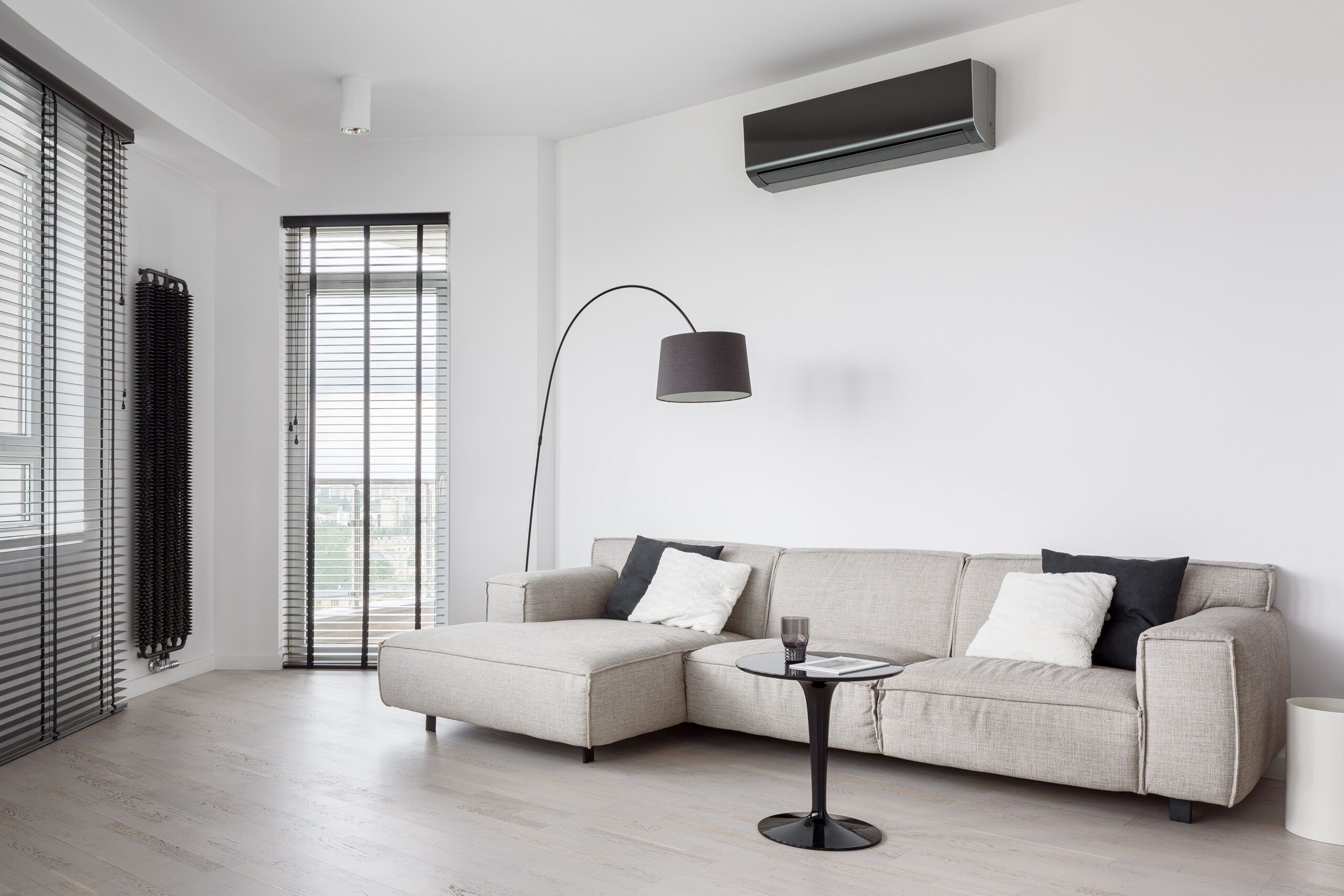Ductless air conditioning (AC), also known as mini-split systems, is a cooling system that provides a flexible and energy-efficient alternative to traditional central air systems. These systems don’t rely on ductwork to move cool air throughout the home. Instead, they use an indoor and outdoor unit connected by refrigerant lines and electrical wiring. Read this before you buy a ductless AC system to learn more about its features, advantages and disadvantages, and installation costs.
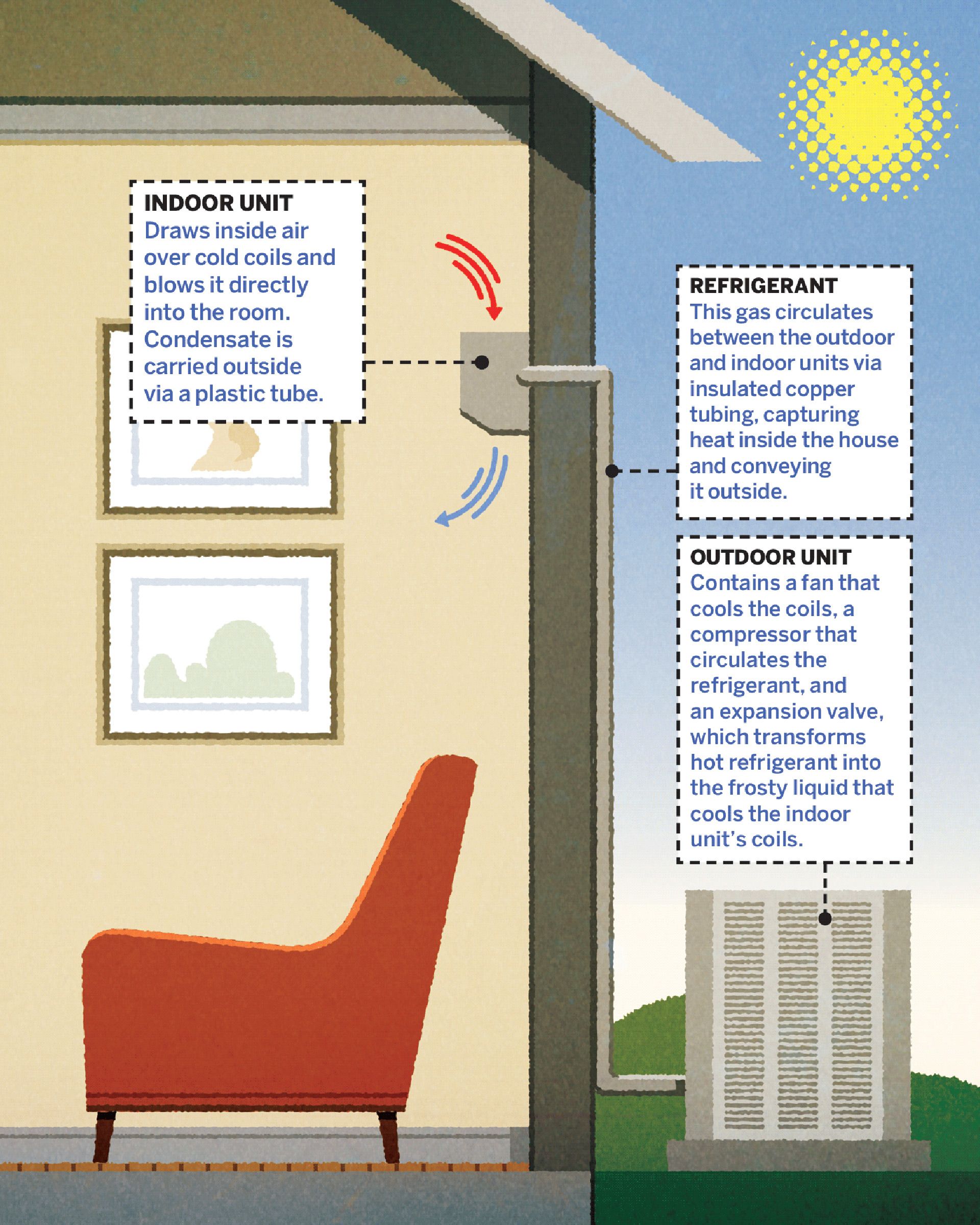
What Is a Ductless AC System?
Ductless AC systems operate differently from traditional AC units. Unlike central air systems that distribute air through ducts, ductless systems consist of one or more indoor air-handling units, the outdoor compressor, and the conduit that houses the power cable, refrigerant tubing, suction tubing, and a condensate drain. These indoor units are often mounted on walls and connected to the outdoor unit via refrigerant lines. Together, they work efficiently to cool specific areas or zones within your home.
One of the most appealing aspects of ductless systems is their simplicity and flexibility. Each indoor unit functions independently, allowing you to cool specific areas only when needed.
Ductless vs. Central Air Conditioning Systems
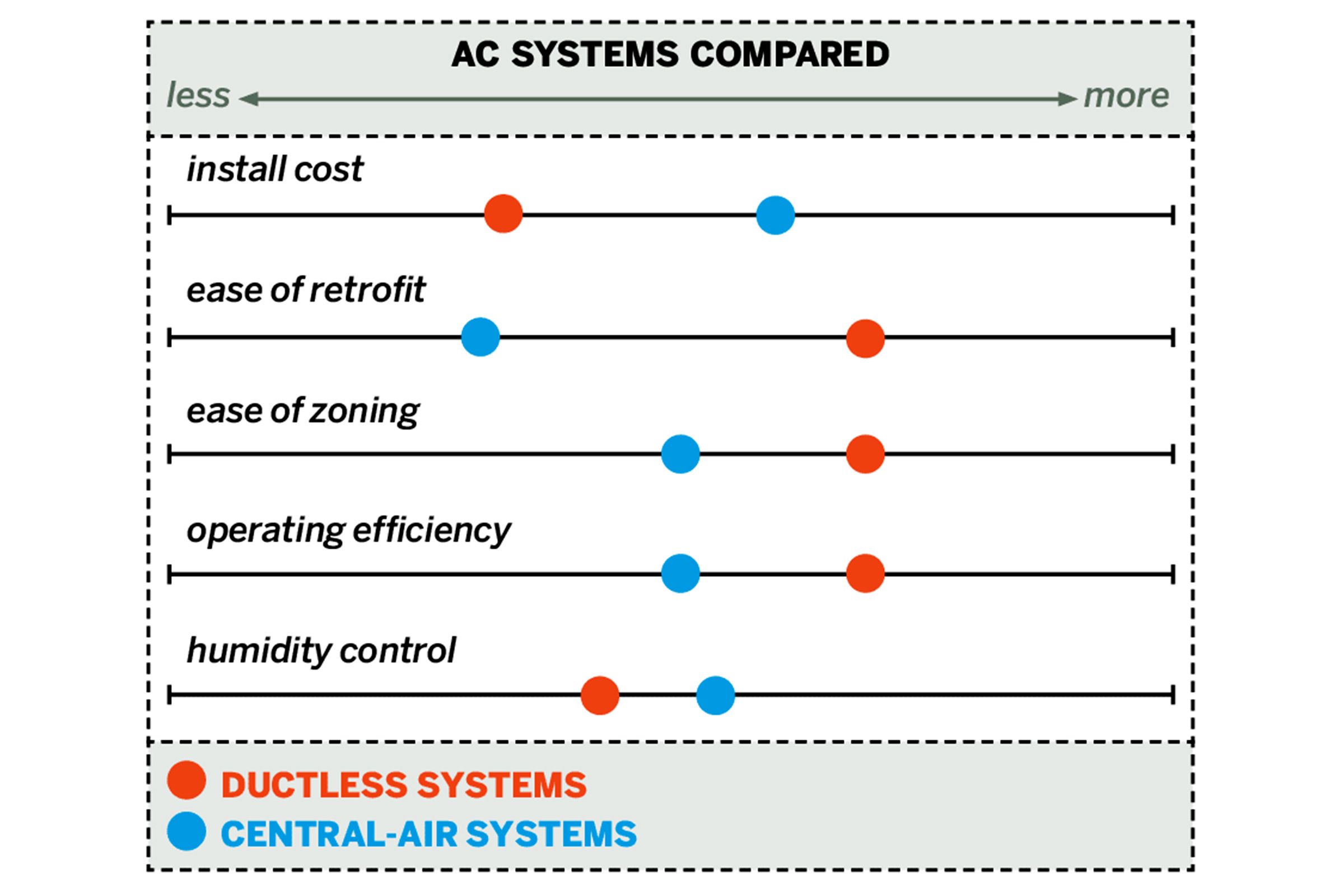
You’re likely to see an energy savings by replacing window AC units with a ductless system. Coincidentally, that’s also about how much cooling is typically lost in central-air systems, thanks to leaky, poorly insulated ductwork.
Benefits and Drawbacks of Ductless AC
Ductless AC systems offer several benefits, but they may not suit every home. Here are their benefits and drawbacks.
Pros
- Better energy efficiency: Ductless AC systems use less energy than traditional central air. Also, the absence of ducts means there is no energy loss due to leaky or poorly insulated ductwork. According to the U.S. Department of Energy, duct losses can account for more than 30% of energy consumption for air conditioning.
- More control: Ductless AC systems allow for zoning. With zoning, you can set different temperatures for different rooms or zones within your home. For instance, you can keep the living room at a comfortable temperature during the day while saving energy by not heating or cooling unoccupied bedrooms.
- Lower energy bills: Ductless systems use inverter-driven compressors that adjust their speed based on your home’s cooling needs. This variable-speed operation reduces energy consumption and leads to lower utility bills.
- It’s quiet: Ductless AC systems run quietly, especially when compared to central air.
- Doesn’t require ductwork: These systems don’t require any ductwork, which may be particularly beneficial in older homes with no ductwork, or for home additions.
Cons
- Higher upfront cost: According to the Department of Energy, ductless AC systems cost about 30% more than central air systems, excluding ductwork, and can cost twice as much as similar window units.
- Visible wall mounts: Unlike central air systems, which have hidden ductwork, ductless systems have visible indoor units mounted on walls.
- Must clean filters frequently: The filters in a ductless AC require cleaning every few weeks.
- Less effective at cooling the entire home: These systems give you more control and allow for zoning, but it’s less effective at cooling the entire home compared to central air systems.
Indoor Unit Options for Ductless AC
Ductless AC systems offer a variety of indoor unit options to suit different needs and preferences. Let’s explore the most common types and their best use cases.
Wall-Mounted Units
These are the most popular indoor unit types for ductless systems. They are easy to install and provide excellent cooling performance. Best suited for living rooms, bedrooms, and common areas, wall-mounted units are typically mounted high on a wall for even air distribution throughout the room.
Floor-Mounted Units
Floor-mounted units are ideal for spaces with limited wall space or for homeowners who prefer a low-profile installation. A professional installs these units near the floor—they are perfect for attics, basements, or rooms with low ceilings.
Ceiling Cassette Units
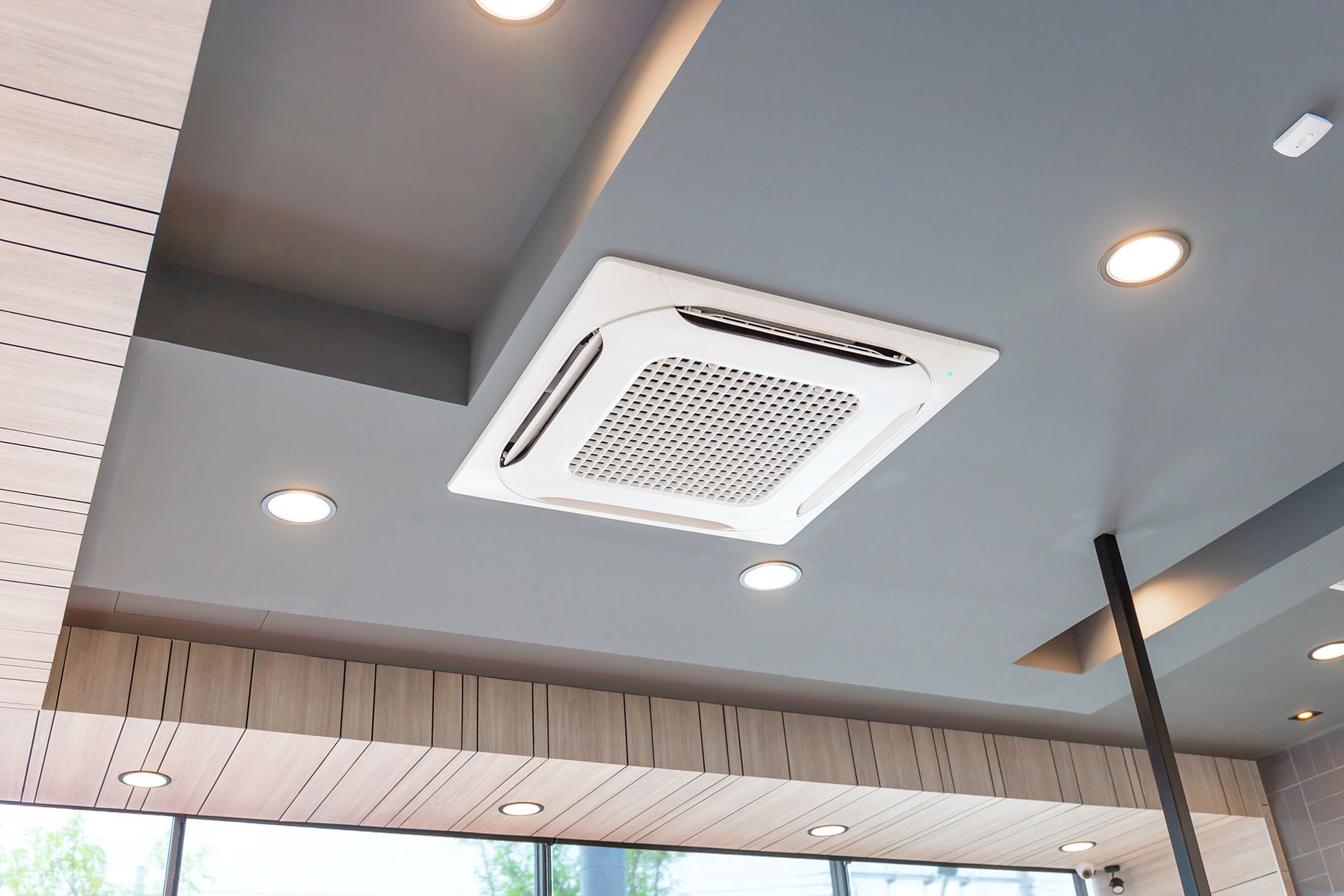
These recessed ceiling units are a great option for those who want a discreet cooling solution. They distribute air evenly in four directions and are excellent for large open spaces, such as living rooms and dining areas.
Horizontal-Ducted Units
These units sit within the ceiling or floor and use short duct runs to distribute air to multiple rooms. They are best for providing efficient cooling for multiple zones.
Concealed Units
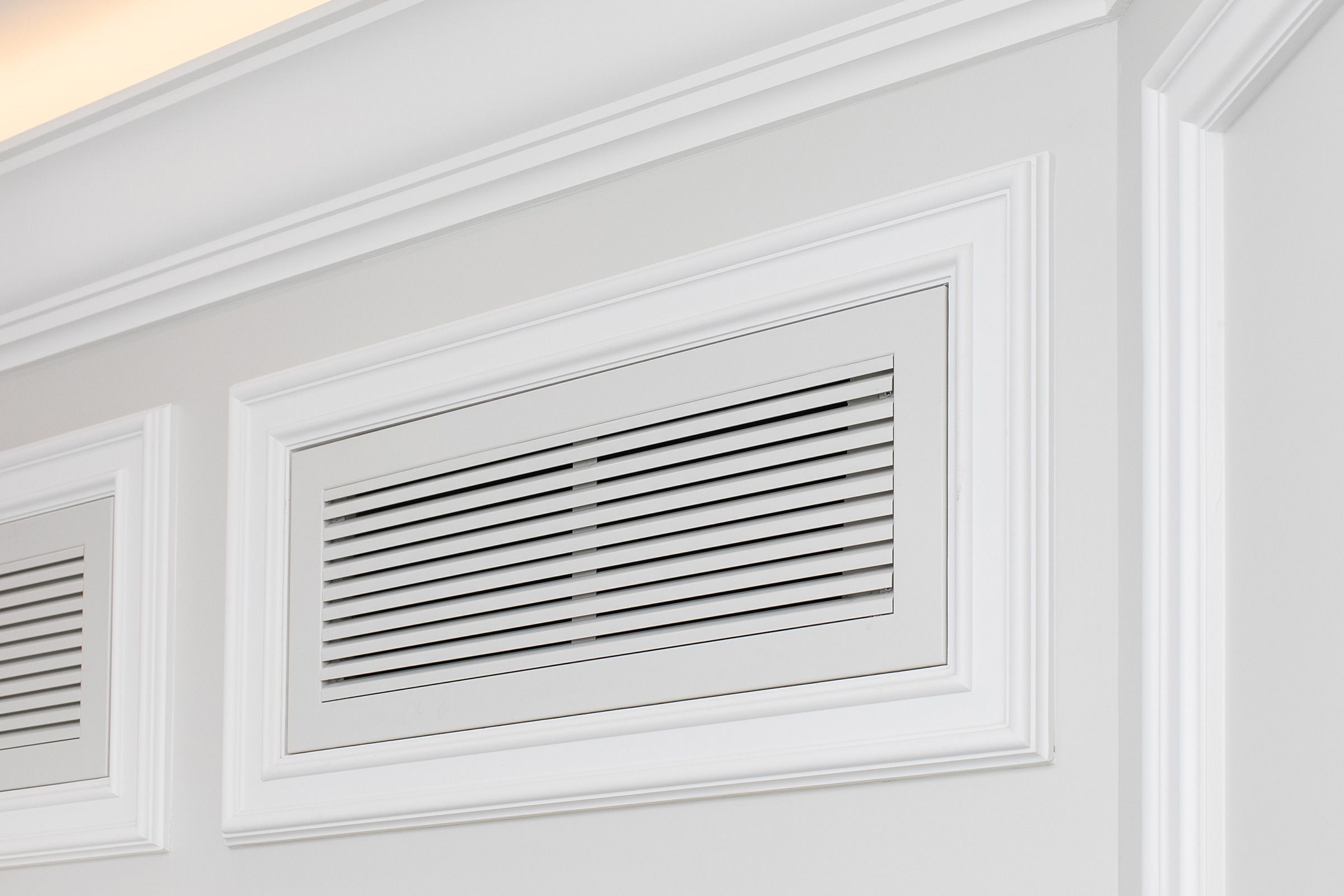
This least obtrusive option sits above a soffit or ceiling and feeds air to different rooms through as much as 12 feet of hidden ducts—you see only the grilles. The unit must be accessible for servicing.
Sizing Your Ductless AC System
Proper sizing ensures that your ductless system operates efficiently and provides optimal comfort. An undersized unit will struggle to cool your space, while an oversized unit will cycle on and off too frequently, leading to energy waste and wear and tear. To determine the correct size, you’ll need to consider factors such as room size, insulation, and local climate.
For accurate sizing, we recommend consulting with a professional HVAC contractor. They will conduct a load calculation to determine each room or zone’s cooling needs. This assessment considers factors like square footage, ceiling height, window size, and heat-generating appliances.
Ductless AC Installation Process and Requirements
The installation process typically begins with selecting the appropriate locations for the indoor and outdoor units. A professional will then mount the indoor unit or units on walls, floors, or ceilings, depending on the type, and install the outdoor unit on a stable surface outside the home. Next, they route the refrigerant lines, power cables, and condensate drain through a small hole in the wall to connect the indoor and outdoor units.
Some minor home modifications may be necessary during the installation process. These can include drilling holes for mounting the indoor units, creating openings for refrigerant lines, and installing brackets to support the outdoor unit.
Ductless AC Maintenance Tips
Regular upkeep of your ductless AC system can help prevent breakdowns and costly repairs. Homeowners should regularly clean and replace air filters, inspect the outdoor unit for debris and to ensure proper airflow, and check for blockages or leaks in the condensate drains.
While homeowners may DIY some maintenance tasks, it’s recommended to schedule professional maintenance visits to help identify potential issues early and keep your system running efficiently. HVAC technicians can perform thorough inspections and tune-ups, including checking refrigerant levels, inspecting electrical connections, and cleaning coils.
Cost Factors for Ductless AC
The initial cost of a ductless AC system includes the equipment and installation. According to Angi, homeowners can expect to pay between $4,350 and $12,250, depending on the number of indoor units required, the complexity of the installation, the brand and system model, and whether you opt for extra features or upgrades.
Multi-zone systems, which cool multiple areas of the home, will add an additional $1,000 or more per zone for the equipment. If your home requires two outdoor units, costs may exceed $10,000 for the equipment. Ongoing costs include electricity usage and periodic maintenance.
Ductless AC: Rebates and Incentives
Several rebates and incentives are available to help offset the initial cost of installation and encourage the adoption of energy-efficient ductless AC systems. Homeowners who install energy-efficient ductless AC systems may be eligible for a federal tax credit of up to $2,000, according to Energy Star. These credits can reduce your tax liability and provide significant savings on your overall investment. In addition to federal incentives, many states and local utility companies offer rebates and incentive programs for ductless AC installations. These programs vary by location but can include cash rebates, bill credits, and low-interest financing options. Check with your local utility provider and ask about available incentives in your area.
Are Ductless AC Units Effective?
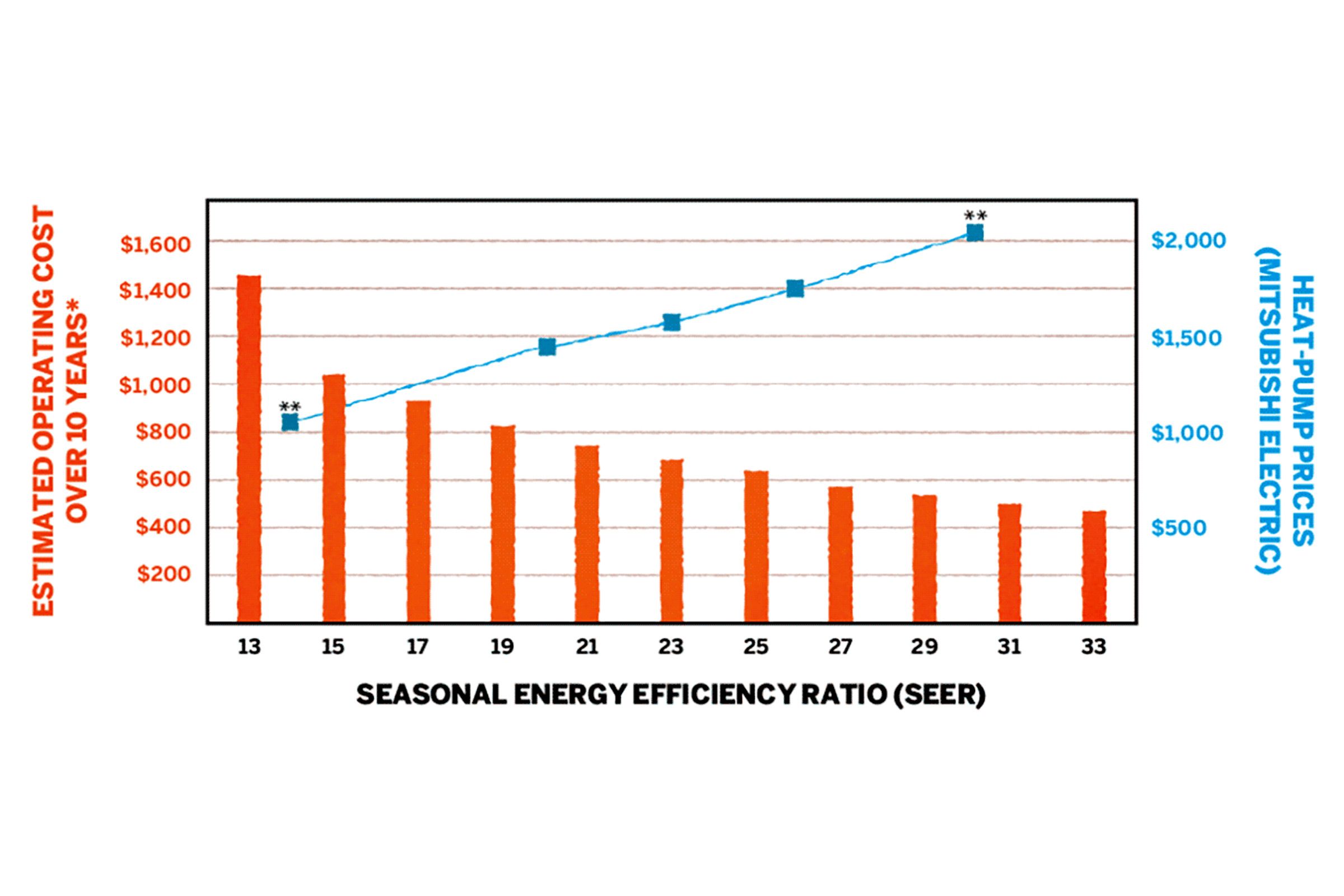
All cooling systems carry a Seasonal Energy Efficiency Ratio (SEER) rating, which compares cooling capacity with the amount of electricity used over the course of a typical cooling season. Ratings on today’s systems range from 13 to 33 SEER. As the graph shows, the higher the rating, the more you’ll pay for your system, and the lower your electricity bills will be come summer. A more energy-efficient system can add $2,000 or more to the unit’s cost.
*Cost data in this article sourced from contractor estimates used by Angi.
Air Quality for Ductless AC
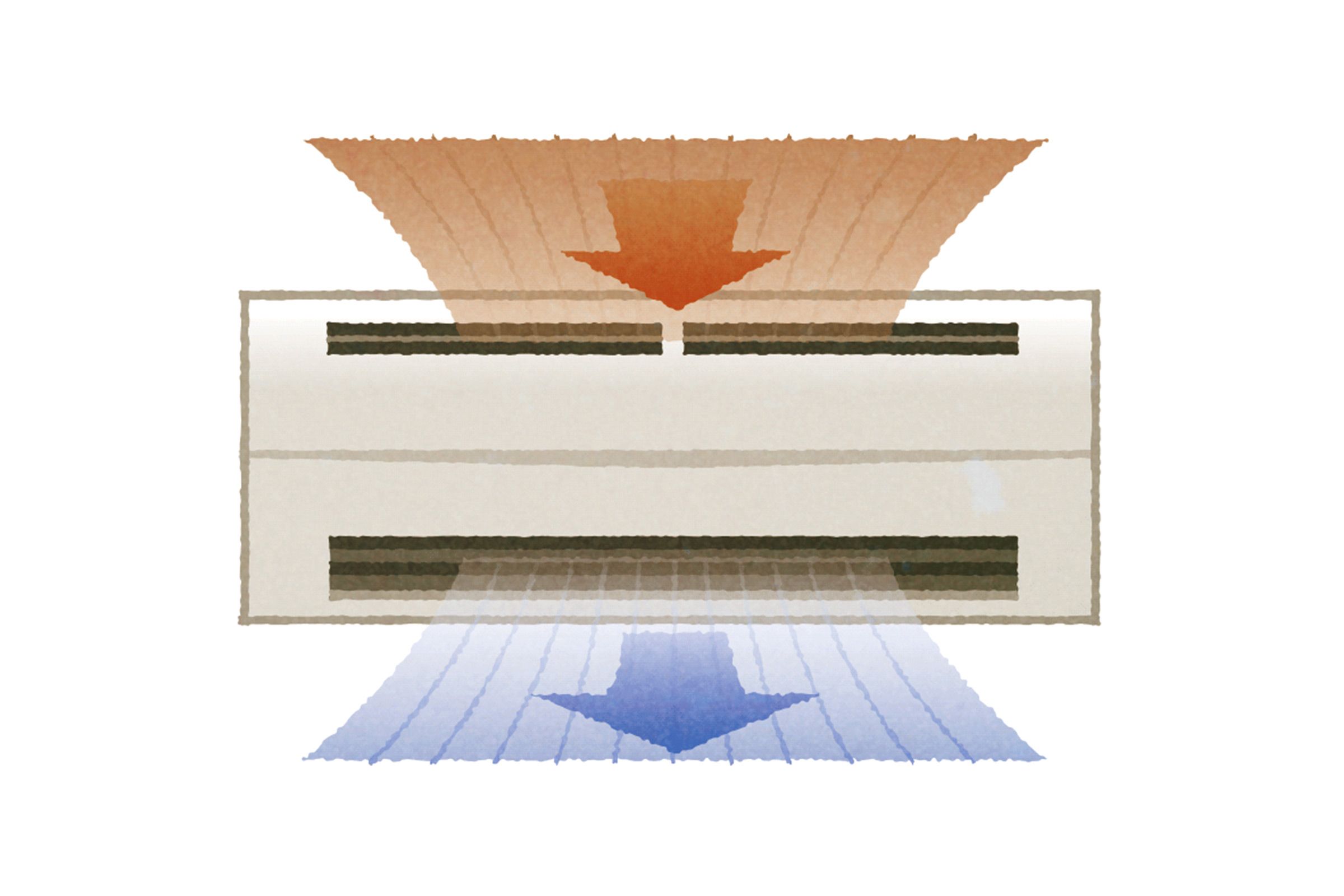
All indoor split AC units include mesh filters that collect dust. But some, such as Mitsubishi Electric’s, also offer filters treated with enzymes—to break down allergens like pet dander and dust mites—as well as ceramic filters embedded with platinum catalysts that neutralize odors.
Ductless AC Systems: Additional Features To Consider

Modern ductless AC systems also come with advanced features, such as smart home integration capabilities and air purification technology.
- Smart home integration: This allows homeowners to control their system remotely via smartphone apps or voice assistants. This feature enables you to adjust temperatures, set schedules, and monitor energy usage from anywhere.
- Air purification: These features can include multi-stage filtration, which removes dust, allergens, and other airborne particles, and UV-C light, which kills bacteria and viruses.
Heat Pumps: The All-Season Option
Ductless systems can produce both hot and cold air if you get a heat pump for the outdoor unit. Its key component is a reversing valve, which switches the direction of the refrigerant flow to suit the season.
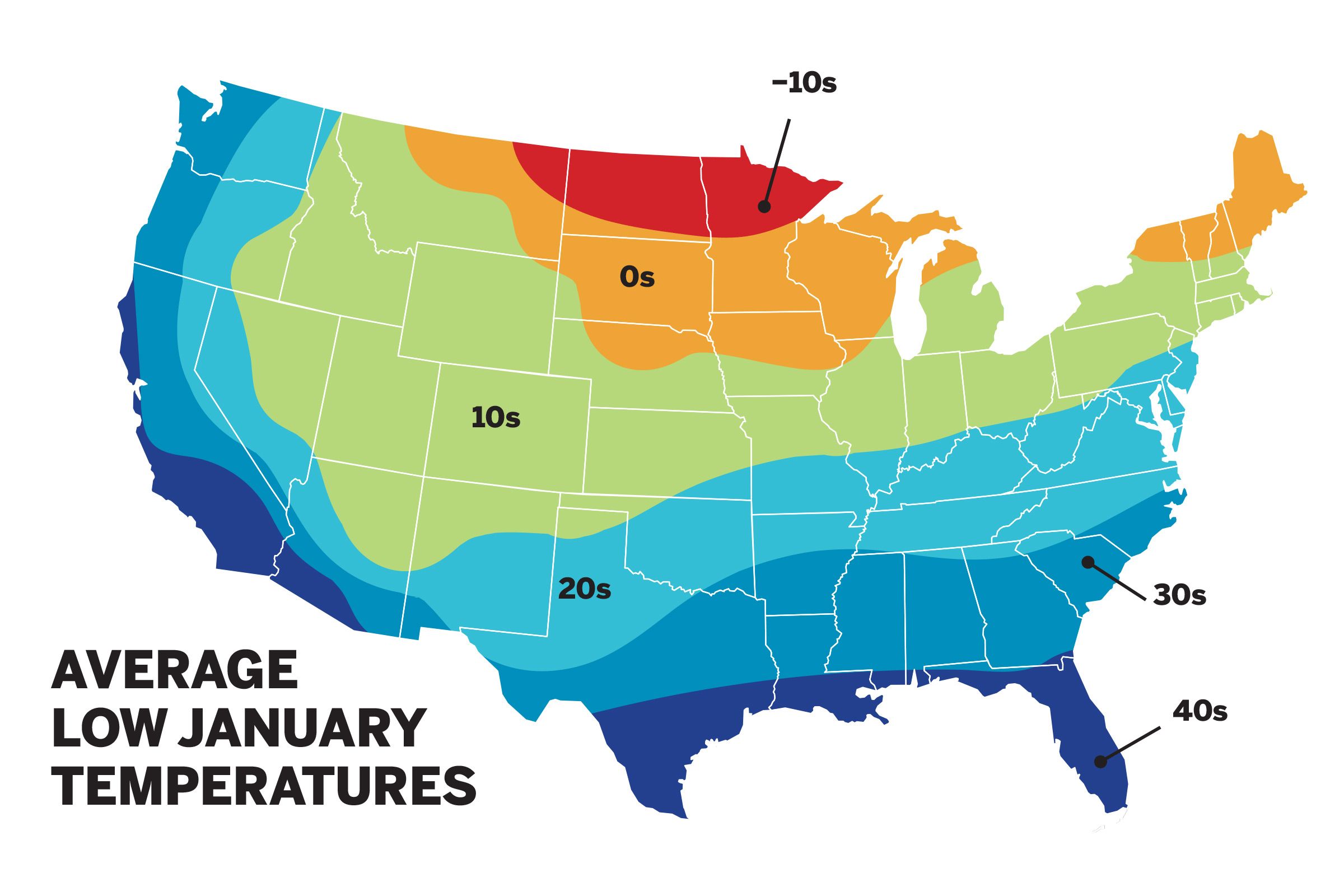
Ductless heat pumps work in a variety of climates, including regions with mild winters and hot summers. However, in extremely cold climates, additional heating sources may be necessary to maintain comfortable indoor temperatures.
Ductless AC Units: Our Conclusion
Ductless AC systems offer a flexible, energy-efficient alternative to traditional central air systems. While the initial cost may be higher, the long-term benefits and potential rebates can make ductless systems an attractive option. Before making your final decision, consult with a professional HVAC contractor for proper sizing and installation.
